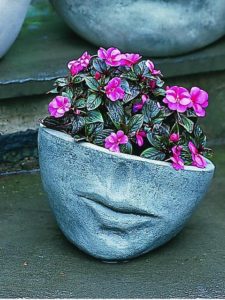Garden Pest Controls is all about ‘Garden Diseases Solutions’.
After choosing the perfect plants and creating a wonderful layout for your garden, you must not allow all your efforts go down the drain because of garden diseases and small insect pests. Your best defense is the knowledge about garden diseases solutions and learning more about garden pest controls. Gardening can be tough, but it is definitely fulfilling to see the great results of your labor of love.
To help you achieve your goals, here are the most important things that you have to remember.
Garden Diseases and Garden Diseases Solutions
You have to learn how to spot the enemies that are slowly wreaking havoc on your garden before the problem gets any worse. Here are some of the most common garden diseases. Learn about the damage caused in gardens by these, as well as the right garden diseases solutions.
- Black Spot Fungus. If you start noticing black spots growing on some of the leaves of your plants, take a closer look at the other plants in the garden. The black spots may have affected most of the other plants, and if they are left alone, the fungus may affect your whole garden. This problem is also called diplocarpon rosae, which can affect any kinds of plants with fleshly leaves and stems.
The best cure for this disease is prevention. This is done by doing a regular inspection of the plants in your garden, and then treating infections as soon as you see them. If not treated, the black spots will cause the leaves to turn yellow and fall. You can treat this using any commercially available fungicide that come in handy bottle sprayers. If the problem is widespread, it is better to buy a concentrate that you can incorporate on your tank sprayer.
These spots spread quickly. Make sure that you thoroughly inspect your garden on a regular basis and treat this problem before you see any further damage caused in gardens. This typically occurs when the plants are constantly wet. The sun and good air circulation, help in getting rid of these spots.
- White Leaf Spot. Also referred to as downy spot, this problem can weaken the trees, which leaves are infected with white spots. As a result, the trees may become vulnerable to other diseases and small insect pests. The best solution to the problem is by keeping the trees well fertilized and watered.
This white spot is a kind of fungus that typically attacks host trees, such as walnut, hickory and pecan. It usually happens when the temperature is warm and during the rains of spring. If not treated, the affected leaves will develop yellowish spots that will turn into brown. This is an indication that the leaves have decayed and will soon fall down.
- Clubroot. This is a difficult garden problem that is caused by a soilborne fungus. This typically happens to cruciferous vegetables, such as cauliflower, broccoli, turnips, mustard and cabbage. What makes it difficult? This can live in the soil for up to 10 years and for this duration, the whole area is unfit to grow your crops. The best prevention to this in order to avoid further damage caused in gardens is to follow the rotation process in planting your plants. There are also commercially available fungicides that can help in treating the soil. Perform the action several months before you plant anything into the soil.
Solutions to Garden Pest
Before you can create or buy the right garden pest controls, you have to know more details about your enemies. Here are some of the most common small insect pests that may already have infiltrated your garden:
- Tortoise beetles. These are small turtle-shaped beetles that chew on the foliage of various kinds of plants, which include cabbage, raspberries, eggplant, corn and strawberries. These beetles are usually dark and have a metallic color, but they also have the ability to alter their color in order to blend with their environment and avoid the predators.
To protect your garden from these pests, make sure that the plants are properly fertilized and watered. Get rid of weeds and keep the planting area clean. Among the many solutions to garden pest that you can apply in this case, the most handy is to remove the pests by hand. You can easily do this if you have detected the problem early on. If not, you can use a residual insecticide to control the problem.
- Ants. Although ants are not dangerous to the plants, these can still pose cosmetic and heath damage to turf grass. It is also nicer to walk into a garden without fearing that you may accidentally step on an anthill.
In this kind of problem, you can use these homemade garden pest controls. For one, you can try using dish soap with water and spray this on an anthill or any areas where you suspect are crawling with ants. You can also create a spray that is made from sugar and borax. If you prefer to use chemical solutions to garden pest, only use them to perform spot control. This will minimize the area that the chemical solution can reach. Inspect the garden and use a spray or the granular form of the chemical solution to get rid of the ants.





Comments on this entry are closed.